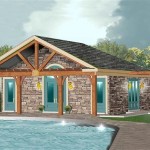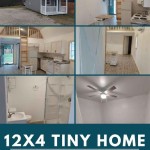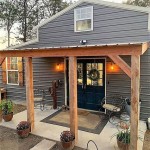Understanding 2D House Plans with Dimensions
A 2D house plan with dimensions is a scaled diagram representing the layout of a building, specifically a house, viewed from above. It is a fundamental tool used in architecture, construction, and interior design, providing a clear and concise visual representation of the spatial relationships between rooms, walls, doors, windows, and other structural elements. Crucially, this type of plan incorporates precise measurements, allowing stakeholders to accurately understand the size and scale of the proposed construction or renovation project.
The primary purpose of a 2D house plan is to communicate design intent and facilitate the construction process. It serves as a blueprint for builders, contractors, and other construction professionals, guiding them in accurately interpreting the designer's vision and executing the project according to the specified dimensions. Without accurate and detailed plans, construction projects can become prone to errors, delays, and cost overruns. The plan acts as a reference point throughout the entire building process, ensuring that the final product conforms to the intended design.
Furthermore, a 2D house plan with dimensions is essential for obtaining building permits and complying with local building codes. Regulatory authorities require these plans to assess the safety, accessibility, and overall compliance of the proposed building with established standards. Dimensions are critical to verifying that the house meets minimum room size requirements, setback distances from property lines, and other zoning regulations. Accurate and complete plans significantly streamline the permitting process and reduce the likelihood of delays or rejection.
Beyond its technical function, a 2D house plan with dimensions also serves as a valuable tool for homeowners and potential buyers. It allows them to visualize the layout of the house, understand the flow of spaces, and assess whether the design meets their needs and preferences. This visualization is particularly important when considering renovations or additions, as it helps homeowners understand the potential impact of the changes on the overall structure and functionality of the house. The dimensions provided empower them to make informed decisions about furniture placement, interior design, and potential modifications to the plan.
Key Components of a 2D House Plan with Dimensions
A comprehensive 2D house plan with dimensions includes several key components that work together to provide a complete and accurate representation of the building. These components are essential for conveying the necessary information to all parties involved in the project.
Walls: Walls are represented as solid lines, typically thicker than other lines, and their dimensions are clearly indicated. These dimensions include the overall length of the wall, its thickness, and the location of any openings, such as doors and windows. The type of wall (e.g., load-bearing, partition wall) may also be specified using different line styles or annotations.
Doors and Windows: Doors are depicted as arcs showing the direction of swing, along with their width and height. Windows are represented as pairs of parallel lines within the wall, with dimensions indicating their width, height, and sill height (the distance from the floor to the bottom of the window). The type of door or window (e.g., sliding glass door, casement window) may also be indicated.
Rooms: Each room is clearly labeled with its name (e.g., living room, bedroom, kitchen). The dimensions of the room, including its length, width, and area, are typically provided. These dimensions are crucial for determining the suitability of the room for its intended use and for planning furniture placement.
Fixtures and Appliances: Major fixtures and appliances, such as toilets, sinks, bathtubs, stoves, refrigerators, and washing machines, are depicted in their approximate locations. While their dimensions may not always be explicitly stated, their presence indicates the intended placement and the space required for their installation and use.
Stairs: Stairs are represented as a series of steps, with arrows indicating the direction of ascent. The number of steps, the riser height (the vertical distance between steps), and the tread depth (the horizontal distance between steps) are typically specified. These dimensions are essential for ensuring the safety and accessibility of the stairs.
Dimensions and Annotations: Dimensions are indicated using dimension lines with arrows pointing to the points being measured. The dimensions are usually expressed in feet and inches or in metric units. Annotations are used to provide additional information, such as the type of material used for construction, the location of electrical outlets, and other relevant details.
Scale: The scale of the drawing is clearly indicated, typically as a ratio (e.g., 1/4" = 1'0"). This allows users to accurately measure distances on the plan and translate them to real-world dimensions.
Importance of Accurate Dimensions
Accuracy in dimensions is paramount in a 2D house plan. Errors in dimensions can lead to a cascade of problems during construction, resulting in costly rework, delays, and even structural issues. The consequences of inaccurate dimensions can be far-reaching, affecting the overall quality and functionality of the finished building.
Preventing Construction Errors: Accurate dimensions ensure that walls are built to the correct lengths, doors and windows are properly sized, and rooms are the intended size. Without precise measurements, contractors may misinterpret the design, leading to errors in construction. For example, a slightly undersized room may not be able to accommodate the intended furniture, or a misaligned wall may interfere with the placement of plumbing or electrical systems.
Ensuring Proper Fit and Functionality: Dimensions are critical for ensuring that fixtures and appliances fit properly within the designated spaces. An inaccurate dimension can result in a toilet being too close to a wall, a refrigerator not fitting into the kitchen alcove, or a bathtub being too large for the bathroom. These issues not only compromise the aesthetics of the house but also affect its functionality and usability.
Facilitating Cost Estimation: Accurate dimensions are essential for accurate cost estimation. Contractors rely on these measurements to calculate the amount of materials needed for construction, such as lumber, drywall, flooring, and paint. Overestimation of dimensions can lead to unnecessary expenses, while underestimation can result in material shortages and construction delays. A well-dimensioned plan allows for a more precise and reliable cost estimate.
Streamlining the Permitting Process: As previously mentioned, building permits require accurate dimensions to verify compliance with building codes and zoning regulations. Incorrect dimensions can lead to delays in the permitting process or even rejection of the application. For example, if the dimensions of a proposed addition do not meet the required setback distances from property lines, the permit may be denied.
Avoiding Legal Disputes: Inaccurate dimensions can also lead to legal disputes between homeowners, contractors, and designers. If the finished building does not conform to the dimensions specified in the plan, the homeowner may have grounds to sue the contractor for breach of contract. Accurate and detailed plans can help prevent these disputes by providing a clear and unambiguous record of the design intent.
Tools and Techniques for Creating 2D House Plans with Dimensions
Creating accurate and professional-looking 2D house plans with dimensions requires the use of appropriate tools and techniques. These range from traditional manual drafting methods to advanced computer-aided design (CAD) software. The choice of tools depends on the complexity of the project, the level of precision required, and the user's skill level.
Manual Drafting: Traditionally, 2D house plans were created using manual drafting techniques. This involves using tools such as pencils, rulers, T-squares, triangles, and compasses to draw the plan on paper. Dimensions are added manually using dimensioning tools and lettering guides. While manual drafting is still used in some situations, it is generally less efficient and less accurate than CAD software.
CAD Software: Computer-aided design (CAD) software has become the industry standard for creating 2D house plans with dimensions. CAD software provides a wide range of tools for drawing, editing, and dimensioning plans with high precision. Popular CAD software programs for architectural design include AutoCAD, Revit, and Chief Architect. These programs allow users to create detailed and accurate plans that can be easily modified and shared electronically.
Online Plan Creation Tools: Several online tools are available for creating 2D house plans. These tools are typically less expensive than CAD software and are often easier to use, making them suitable for homeowners and small-scale projects. However, they may offer less flexibility and fewer features than professional CAD software. Examples of online plan creation tools include Floorplanner, RoomSketcher, and SmartDraw.
Laser Measuring Tools: Laser measuring tools are used to accurately measure distances and dimensions within existing buildings. These tools use a laser beam to measure distances quickly and accurately, eliminating the need for manual tape measures. The data can then be transferred to CAD software or other plan creation tools to create an accurate representation of the existing building.
Dimensioning Techniques: Regardless of the tools used, proper dimensioning techniques are essential for creating clear and understandable plans. Dimensions should be placed in a logical and consistent manner, using dimension lines with arrows pointing to the points being measured. Dimensions should be expressed in a clear and unambiguous format, typically in feet and inches or metric units. Overall dimensions should be placed outside of the plan, while interior dimensions should be placed within the room boundaries.
In summary, a 2D house plan with dimensions is a critical document for any construction or renovation project. Its accuracy and clarity are paramount for preventing errors, ensuring proper functionality, and facilitating a smooth and efficient construction process. Understanding the key components of a plan, the importance of accurate dimensions, and the available tools and techniques is essential for anyone involved in the design, construction, or renovation of a house.

Beautiful 2d Floor Plan Ideas Engineering Discoveries Home Map Design House Building Plans Designs

2d Floor Plan Archives Page 2 Of 6 Dk Home Designx

Architectural Plans 2d Floor Plan Design

2d Architectural House Floor Plan Hyderabad In Pan

30 Fantastic 2d Floor Plan Ideas Engineering Discoveries 30x50 House Plans Simple

2d House Plan Plans Floor Elevation Design Front Layout Architecture Drawings Structure Designs

30x40sqft Duplex Row House Design 1200sqft Plan

2d Floor Plans

Beautiful 2d Floor Plan Ideas To See More Read It House Layout Plans Building Bungalow

2d House Plan Free 3d Model By Shilpa Vyas Cad Crowd
Related Posts








